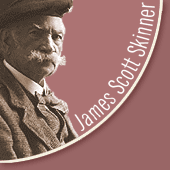




Changing fashions
The
Collection's Dance Entries · Changing
fashions · Francis
Peacock
The Ball-Room
Guide · ‘A
Guide to Fashionable Dancing’
‘The
People’s
Ball Room Guide’ · Illustrated
Guide to the National Dances of Scotland
‘Highland
Dancing in the Olden Times’ · Dance
Video Clips
Dancing in Scotland is very different today to the way it was over 100 years ago, when Skinner was teaching. There are many reasons for this, such as changing fashions – in music as well as in dance.
- Some of the popular ballroom dances he taught, such as Quadrilles, and Quadrille Lancers, are rarely performed today.
- Country dances have altered: team-work and precision is important. Some movements, such as the pousette are now danced differently.
- Highland dancing has changed beyond all recognition. It is extremely athletic, with high leaps being especially prized. It is difficult. The music is slower so that the dancer has time to leap as high as possible. One hundred years ago, dancers danced at almost twice the speed they do today and usually in hard-soled shoes. Soft-soled shoes were not used before the 1st World War except by professional dancers. Many of the steps were closer to Scottish step dance than those performed today.
- There is a new popular phenomenon – ceilidh dancing. This takes in the more popular couple and group dances, such as The Canadian Barn Dance, The Highland Schottische, The Eightsome Reel etc. Skinner taught these dances when they were still new and evolving.
Fortunately, as in Skinner’s time, new dances in each of these disciplines are still being developed today.
Pat Ballantyne


Historic
Collections · Kings College · Old
Aberdeen · AB24 3SW
Tel:(0)44 1224 274312 · E-mail: scottskinner@abdn.ac.uk